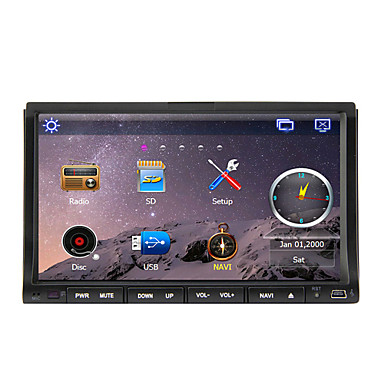| Developer | Microsoft Corporation |
|---|---|
| OS family | Windows CE |
| Working state | Current |
| Source model | Closed source (shared source kernel[1]) |
| Latest release | 2013 / June 2013 |
| Available in | Multilingual |
| Platforms | x86, MIPS, ARM, SuperH |
| Kernel type | Monolithic kernel Hybrid kernel |
| License | Proprietary software(Microsoft EULA) |
| Official website | Windows CE |
Windows CE (also known officially as Windows Embedded Compact post version 6.0,[2][3] and sometimes abbreviated WinCE) is Microsoft's operating system for embedded devices and minimal computers. Windows CE is a different operating system and kernel. It is not a trimmed-down version of desktop Windows. Nch videopad registration code. It is not Windows XP Embedded which is NT-based.
The Zune portable media player, as well as the Windows Mobile and Windows Phone 7smartphone platforms are based on Windows CE.
Windows Media Player 6.0 free download - Windows Media Player (64-bit), Windows Media Player 12, Windows Media Player (Windows 98SE/2000/Me), and many more programs. The Pocket DivX Player is a FREE Open Source multifunction video and audio player for the PocketPC platform that can play DivX, OpenDivX, MPEG-4, MPEG-1 videos and MP3 audio. This version is a special HPC and Windows CE.NET adaption for webpads with a screen size of 800x600 pixels from Marc E. Dukettes Pocket MVPplayer. PocketMusic PocketMusic is a freeware MP3 player for the Pocket PC 2003, Windows Mobile 5.0 and Windows Mobile 6.0 or 6.5 PocketMVP PocketMVP is a free open source media player for Pocket PCs that supports DivX, OpenDivX, MPEG-4, MPEG-1 videos and MP3 audio. We are working with Windows CE 6.0 on OMAP3530 platform. And we have a requirement for FLV4 media streaming (This Requires ON2-VP6 video codec and MP3 audio codec). Here is what we are thinking, can any one suggest me about this solution for feasibility. Purchase ON2-VP6 codec from ON2 technologies and add it to OSDesign. The Core Pocket Media Player is a media player for Windows CE/Windows Mobile devices, using ARM processors. This includes the the iPaq and Axim models. File types and codecs supported include AC3, MP4, AVIs and MP3s, Matroska.
Windows Ce Media Player

Version 8, or Windows Embedded Compact 2013, released in June 2013 is the only still supported version (until October 10, 2023).
Versions[change | change source]
| Version | Changes |
|---|---|
| 1.0 | Released in November 1996 [MSCE1].[4] Codenames 'Pegasus/Alder'.[5]
|
| 2.0 | Released in September 1997 [MSCE2].[4] Codename 'Birch'.[5]
|
| 3.0 | Released in June 2000 [MSCE3].[4] Codename 'Cedar'.[5]
|
| 4.x | Released in January 2002 [MSCE4].[4] Codename 'Talisker/Jameson/McKendric'.[5] Changed the driver structure a lot. And added Features.
|
| 5.0 | Released in August 2004.[5] Adds lots of features. Codename 'Macallan'.[5]
|
| 6.x | Released in September 2006. Codename 'Yamazaki'.[5]
|

Version 8, or Windows Embedded Compact 2013, released in June 2013 is the only still supported version (until October 10, 2023).
Versions[change | change source]
| Version | Changes |
|---|---|
| 1.0 | Released in November 1996 [MSCE1].[4] Codenames 'Pegasus/Alder'.[5]
|
| 2.0 | Released in September 1997 [MSCE2].[4] Codename 'Birch'.[5]
|
| 3.0 | Released in June 2000 [MSCE3].[4] Codename 'Cedar'.[5]
|
| 4.x | Released in January 2002 [MSCE4].[4] Codename 'Talisker/Jameson/McKendric'.[5] Changed the driver structure a lot. And added Features.
|
| 5.0 | Released in August 2004.[5] Adds lots of features. Codename 'Macallan'.[5]
|
| 6.x | Released in September 2006. Codename 'Yamazaki'.[5]
|
References[change | change source]
Microsoft Windows Ce 6.0
- ↑'Microsoft opens full Windows CE kernel source'. Archived from the original on 2012-12-09. Linux Devices' article(Nov. 01, 2006).
- ↑Microsoft renames Windows CE, sets CE 6.0 launch date
- ↑Windows Embedded Homepage
- ↑ 4.004.014.024.034.044.054.064.074.084.094.104.114.12'Risk Analysis of Mobile Devices with Special Concern of Malware Contamination'(PDF). 090517 2000grad.com
- ↑ 5.05.15.25.35.45.55.6'Windows Embedded Blog : CE 6.0 - why the codename 'Yamazaki' ?'. 090517 blogs.msdn.com
- ↑'Pen Computing Magazine: Windows CE .net'. 090517 pencomputing.com
- ↑ 7.07.17.2'MS readies WinCE 5.0 preview'. 090517 theregister.co.uk
- ↑'The History of the PDA'. 090517 seditaville.com
- ↑'Introduction to Microsoft embedded technologies - Session 1'. 090517 embedded.net.nz
- ↑'Differences between Windows CE 5.0 and Windows CE 6.0'. Archived from the original on 2012-12-09. 090517 windowsfordevices.com
